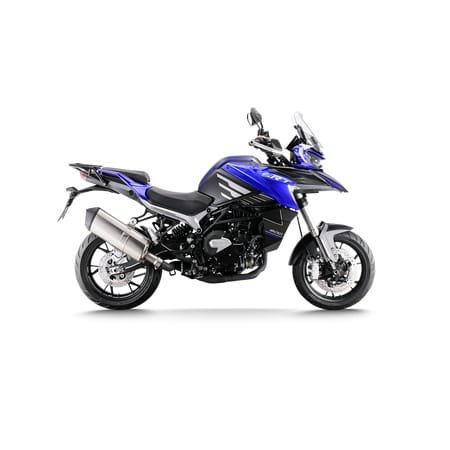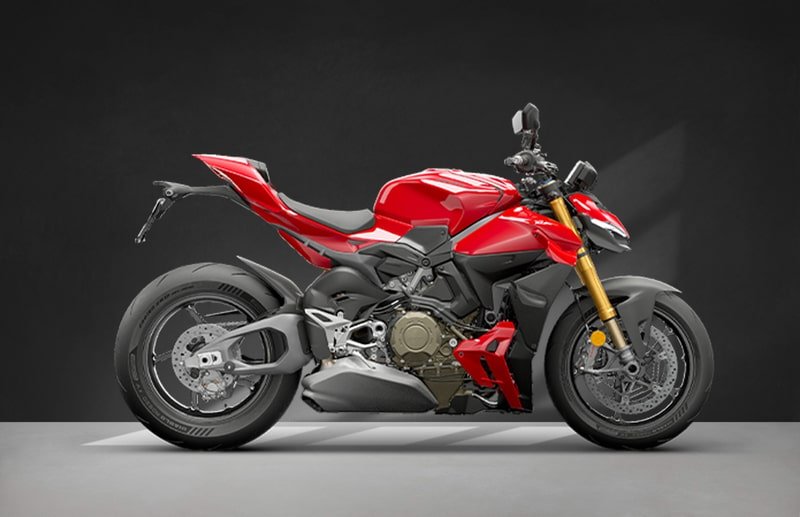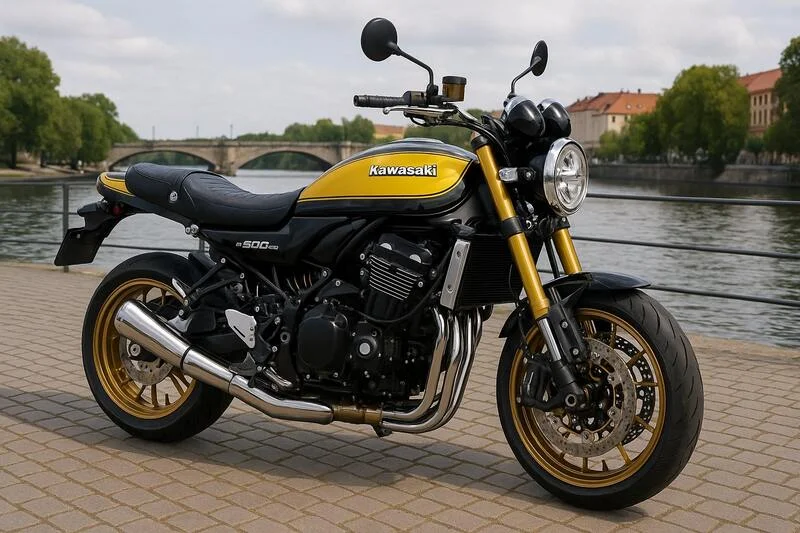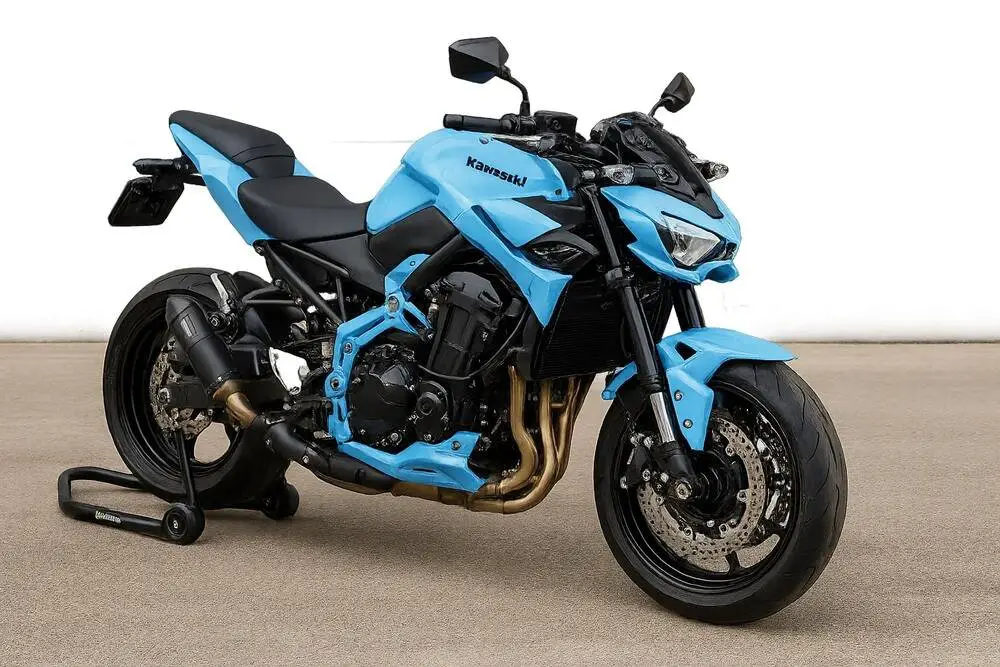QJMOTOR Xiao800 Review – The Stylish Urban Electric Cruiser Redefining the 800cc Class in 2025
Introduction to QJMOTOR and the Xiao800
QJMOTOR is making headlines once again—this time not for a sportbike or utility model, but for an all-new electric cruiser: the Xiao800. As the automotive world rapidly transitions to electric, QJMOTOR is boldly entering the EV cruiser segment with a futuristic yet nostalgic model that blends retro styling with modern tech.
The Xiao800 stands as a strong statement of what electric motorcycles can be: stylish, powerful, practical, and most importantly, desirable. Designed for city riders who crave something different, the Xiao800 is turning heads on urban streets and EV showrooms alike.
Design and Aesthetic Appeal
The QJMOTOR Xiao800 is a stunning blend of classic cruiser form and electric minimalism. It sports a stretched silhouette, a low-slung seat, and a faux fuel tank that hides electrical components—all in a package that channels vintage Americana with futuristic vibes.
-
Color Options: Matte gray, glossy white, stealth black, and dual-tone blue-black
-
Headlamp: Round LED headlamp with integrated DRLs
-
Display: Floating-style full-color TFT screen
-
Materials: Steel trellis frame with aluminum body panels
Its distinctive batwing-style front, LED strip tail light, and sculpted side panels make it one of the most visually unique electric cruisers on the market today.
Electric Motor and Performance
The Xiao800 isn’t just about looks—it delivers punchy, practical performance too.
-
Motor Type: Mid-mounted electric motor
-
Peak Power: ~13–15 kW (17–20 hp equivalent)
-
Torque: Over 100 Nm, available instantly
-
Top Speed: 100–110 km/h (62–68 mph)
-
0–50 km/h Acceleration: Under 4 seconds
This performance makes it ideal for quick takeoffs at traffic lights and stress-free overtaking in traffic, all while being whisper-quiet.
Battery Capacity and Range
QJMOTOR equips the Xiao800 with a high-efficiency lithium battery pack engineered for urban commutes and weekend cruises.
-
Battery Capacity: 72V 60Ah (or similar based on regional spec)
-
Claimed Range: 120–140 km
-
Real-World Range: 100–120 km depending on riding mode and terrain
-
Charging Time: 4–6 hours (standard charger), 2–3 hours (fast charger optional)
The battery is well-integrated into the frame, and the bike supports swappable battery architecture in some markets.
Ride Comfort and Suspension Setup
The QJMOTOR Xiao800 might be an electric motorcycle, but it hasn’t cut corners on ride quality. Designed for real-world city riding and occasional open-road cruising, it offers a plush and balanced ride.
-
Front Suspension: Telescopic forks with good damping for potholes and speed bumps
-
Rear Suspension: Dual shock absorbers with preload adjustability
-
Ride Feel: Stable, planted, and vibration-free thanks to electric powertrain smoothness
Its low center of gravity, courtesy of the under-mounted battery and motor, improves handling in tight turns and boosts confidence in low-speed maneuvers. Whether you’re lane-splitting or gliding through traffic, the Xiao800 feels composed and in control.
Ergonomics and Rider Interface
QJMOTOR nailed the ergonomics with the Xiao800’s cruiser-inspired layout. Designed for relaxed riding posture, it’s ideal for daily commutes and leisure cruises alike.
-
Seat Height: ~720mm—low enough for most riders to flat-foot
-
Riding Posture: Upright with forward-set pegs and wide bars
-
Foot Controls: Positioned for minimal knee bend, enhancing long-ride comfort
-
Display Interface: 5-inch full-color TFT with speed, range, battery health, regen levels, ride mode, and connectivity status
The interface is intuitive and minimalistic. Everything from toggling ride modes to checking battery life is accessible with simple handlebar controls.
Smart Features and Technology
The Xiao800 comes packed with tech that rivals top-tier electric bikes while keeping usability front and center.
-
Ride Modes: Eco, Normal, and Sport
-
Regenerative Braking: Adjustable regen for energy recovery and smoother stops
-
Connectivity: Mobile app integration via Bluetooth
-
App Features: GPS tracking, anti-theft alerts, remote lock/unlock, service reminders
-
OTA Updates: Firmware upgrades delivered via the cloud
It’s a smart motorcycle for smart cities, giving riders real-time control and visibility over their ride and diagnostics.
Transmission and Drivetrain
Electric motorcycles typically don’t require multi-speed transmissions—and the Xiao800 is no exception.
-
Drive Type: Belt drive (quiet, low maintenance)
-
Throttle: Smooth, progressive electric throttle with precise response
-
Reverse Gear: Yes—useful for tight parking spots
-
Hill Assist: Included in higher variants for added control on inclines
The belt system is quieter than chains, requires less upkeep, and delivers linear power efficiently—an ideal combination for electric cruisers.
Braking System and Safety Tech
With instant torque on tap, safety becomes critical—and QJMOTOR delivers here as well.
-
Front Brake: 280–300mm disc with twin-piston caliper
-
Rear Brake: 240mm disc
-
ABS: Dual-channel ABS standard on all variants
-
Other Safety Features: Traction control, side-stand cutoff, regen-based braking assist
Braking is solid and progressive, and the combination of ABS with regenerative braking ensures safe, stable deceleration in all weather conditions.
Build Quality and Durability
Unlike some budget electric motorcycles, the Xiao800 doesn’t feel plasticky or fragile.
-
Frame: High-tensile steel trellis
-
Panels: Precision-molded ABS and aluminum with weather sealing
-
Weather Resistance: IP67 water-resistance for motor and battery compartments
-
Fit & Finish: Excellent, with tight tolerances and durable paintwork
This isn’t just a good-looking EV—it’s made to withstand the wear and tear of daily life in real-world conditions.
Ownership Experience and Maintenance
One of the biggest perks of owning an electric motorcycle is low maintenance, and the Xiao800 is no different.
-
Routine Maintenance: Virtually none—no oil, no clutch, no gearbox
-
Wear Items: Brake pads, tires, belt
-
Battery Warranty: Typically 3–5 years or 50,000–60,000 km
-
Motor Warranty: 5 years (varies by region)
-
Cost of Ownership: Lower than any comparable petrol bike over 3 years
Battery degradation is minimal, and QJMOTOR offers battery health diagnostics via its app to help users monitor longevity.
Competitor Comparison
To understand where the QJMOTOR Xiao800 stands in the growing electric cruiser market, let’s compare it with some top alternatives:
| Feature | QJMOTOR Xiao800 | Super Soco TC Max | NIU RQi Sport | Honda EM1 e: |
|---|---|---|---|---|
| Motor Power | 13–15 kW | 5 kW | 10 kW | 1.7 kW |
| Top Speed | 100–110 km/h | 100 km/h | 110 km/h | 45 km/h |
| Real-World Range | 100–120 km | 80–100 km | 100–130 km | 40–50 km |
| Ride Type | Cruiser | Café Racer | Street Naked | Scooter |
| Drive | Belt | Chain | Belt | Hub Motor |
| App Support | Yes | Yes | Yes | Limited |
| Price Range | Mid | Budget | Premium | Entry-Level |
Verdict: The Xiao800 is a well-rounded choice with better performance than most budget models and more character than sporty electrics. It’s the only one with a true cruiser persona in this category.
Pros and Cons of the Xiao800
| Pros | Cons |
|---|---|
| Stylish retro-modern cruiser look | Slightly heavier than some competitors |
| Strong torque and quick acceleration | Fast charger not always standard |
| Long range and fast charging support | Availability still limited in some markets |
| Comfortable seating and low center of gravity | Belt may require periodic adjustment |
| Smart features and OTA updates | No support for level 3 DC fast charging yet |
| Low maintenance and quiet operation | No windshield or touring accessories stock |
The Xiao800 is clearly aimed at urban and light touring riders who want a bold look with futuristic function.
Price, Incentives, and Market Availability
As of 2025, the QJMOTOR Xiao800 is competitively priced in the mid-range electric motorcycle segment.
-
Asia (including China & India): $3,200 – $4,000
-
Europe: €3,800 – €4,300 (including VAT)
-
Latin America: $3,500 – $4,200
Incentives:
Many countries offer EV subsidies, tax rebates, or registration waivers, further reducing the on-road cost. For instance:
-
India: FAME II and state subsidies can bring down the price by ₹20,000–₹50,000
-
Europe: Buyers may get up to €700–€1,500 in tax benefits or grants
Availability:
-
Currently available in China, Southeast Asia, and select European cities
-
Global rollout planned for 2025, including Australia and Latin America
Who Should Buy the QJMOTOR Xiao800?
This bike is best suited for:
-
Urban commuters: who want performance with zero emissions
-
Eco-conscious riders: making the switch from petrol to electric
-
Young professionals: looking for style and tech in one package
-
Weekend riders: who love to cruise in style without worrying about fuel prices
The Xiao800 is not just a motorcycle—it’s a statement for the modern era.
Final Verdict: Is the Xiao800 the Future of Urban Cruising?
Absolutely. The QJMOTOR Xiao800 combines the heart of a cruiser with the soul of modern EV innovation. With powerful performance, excellent range, and a head-turning design, it redefines what a cruiser can be in a clean-energy world.
If you're looking for an electric motorcycle that blends performance, comfort, tech, and style, the Xiao800 should be at the top of your list.
Frequently Asked Questions (FAQs)
1. What is the top speed of the QJMOTOR Xiao800?
It can reach up to 100–110 km/h depending on the variant and riding conditions.
2. How long does it take to charge the Xiao800?
Standard charging takes 4–6 hours, while fast charging (if available) cuts it down to around 2–3 hours.
3. What’s the real-world range of the Xiao800?
It delivers 100–120 km on a full charge under normal riding conditions.
4. Is the Xiao800 beginner-friendly?
Yes, it’s ideal for new riders due to its low seat height, predictable throttle response, and smooth ride.
5. Can I use the Xiao800 for long-distance rides?
It’s best suited for urban and semi-urban use, though light touring is possible with strategic charging stops.
6. Does it come with mobile app support?
Yes, the Xiao800 supports Bluetooth-enabled mobile apps with features like GPS, anti-theft alerts, and remote diagnostics.




